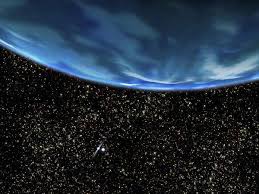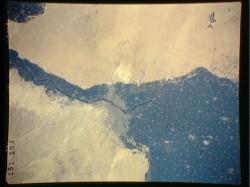A species of giant tortoise thought to have been extinct for 150 years has not disappeared from the earth after all!
Thanks to sophisticated DNA analysis
techniques and diligent fieldwork, scientists have learned that some
giant tortoises recently discovered on an island in the Galapagos are
immediate descendants of a tortoise species long thought extinct. And it gets better: scientists
and conservationists are confident that they can restore a sizeable
population of the tortoise species to its original home of the Galapagos
island called Floreana.
SCIENCE TO THE RESCUE
Several
years ago, scientists discovered on the Galapagos island called Isabela a
colony of giant tortoises living on the slopes of a volcano. Then, in 2008, scientists returned to Isabela to conduct DNA tests on some of the tortoises they’d found. Blood
samples taken from more than 1,600, or about 20% of the tortoises,
showed that 84 of them had a pure Floreana tortoise as a parent.
Since giant
tortoises typically live more than 100 years, and because 30 of the 84
tortoises with a Floreana tortoise parent were under the age of 15, it
seemed highly likely that some of the tortoises on Isabela were pure
Floreana tortoises.
A BRIGHT FUTURE FOR FLOREANA TORTOISES
Such encouraging news offers great hope for recovery of this giant tortoise species, researchers say. One
reason for optimism is that over the last 50 years, other Galapagos
tortoise species have responded well to recovery efforts. In the 1960s, the number of tortoises was as low as 14 individuals on one island. But since that time, more than 4,000 young tortoises have been returned to the wild in the Galapagos. Many have been reproducing, and populations have been increasing.
The newly
launched Floreana tortoise rescue mission will be part of Project
Floreana, a comprehensive effort to restore the island, as nearly as
possible, to the way it was in 1835, when Charles Darwin first visited
it, explains Dr. Linda Cayot, science advisor to the Galapagos
Conservancy. “Restoring true Floreana tortoises as part of that effort is now a dream that could come true,” she says.
Scientists
and conservationists will increase the Floreana tortoise population by
carefully breeding those tortoises that have one Floreana parent and
also by breeding pure Floreana tortoises.
Project Floreana is also dedicated to ensuring a sustainable community for the island’s several hundred human residents and to involving the people in all phases of the conservation program.
GREAT VALUE OF GIANT TORTOISES
Restoration of the Floreana tortoise
is a good thing not just because a fellow species is being brought back
from the brink of extinction. The Floreana tortoise plays a vital role in maintaining healthy Galapagos ecosystems. As
the only grazing herbivores in the Galapagos, giant tortoises keep
invasive plants in check, disperse seeds, and, in general, maintain
habitat diversity which allows many native species to thrive.
A TORTOISE MYSTERY
Perhaps you
wonder how the Floreana giant tortoises came to be living on a
different island, Isabela, 150 years after they had disappeared from
their native Floreana. During the
nineteenth century, pirates and other visitors to the Galapagos
frequently picked up giant tortoises on one island and kept them aboard
ship to use later as food. Tortoises were often left behind on one island or another when they were no longer needed. Pirates
probably left some of the Floreana tortoises on Isabela, afterwhich
those on Floreana were hunted until all had been killed.
A FEW FACTS ABOUT GIANT TORTOISES
- A giant tortoise can reach a length of almost six feet and a weight of 880 pounds.
- With a lifespan of more than 100 years, giant tortoises are one of the longest living animals on earth.
- Giant tortoises are native to seven Galapagos islands. (The Galapagos archipelago consists of 13 large islands, six small ones, and more than 40 islets).
- ‘Galapago’ means ‘turtle’ in Spanish.
- Differences in tortoise size and shape from island to island helped Charles Darwin develop his theory of evolution.
- In the 1600s, there were more than 250,000 giant tortoises in the Galapagos. Today there are about 15,000 tortoises, of several different species.





























